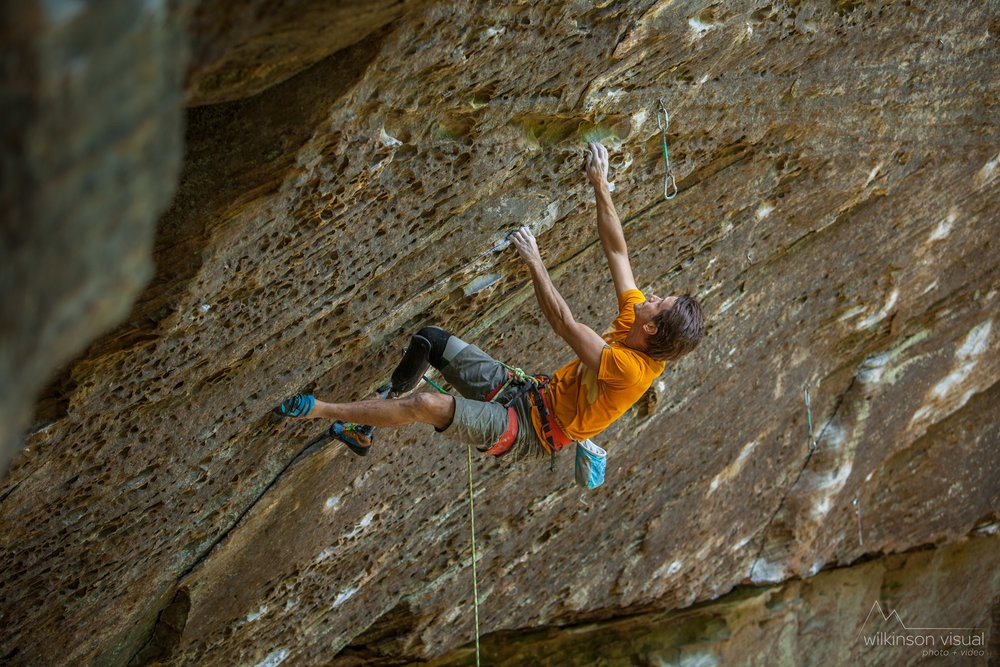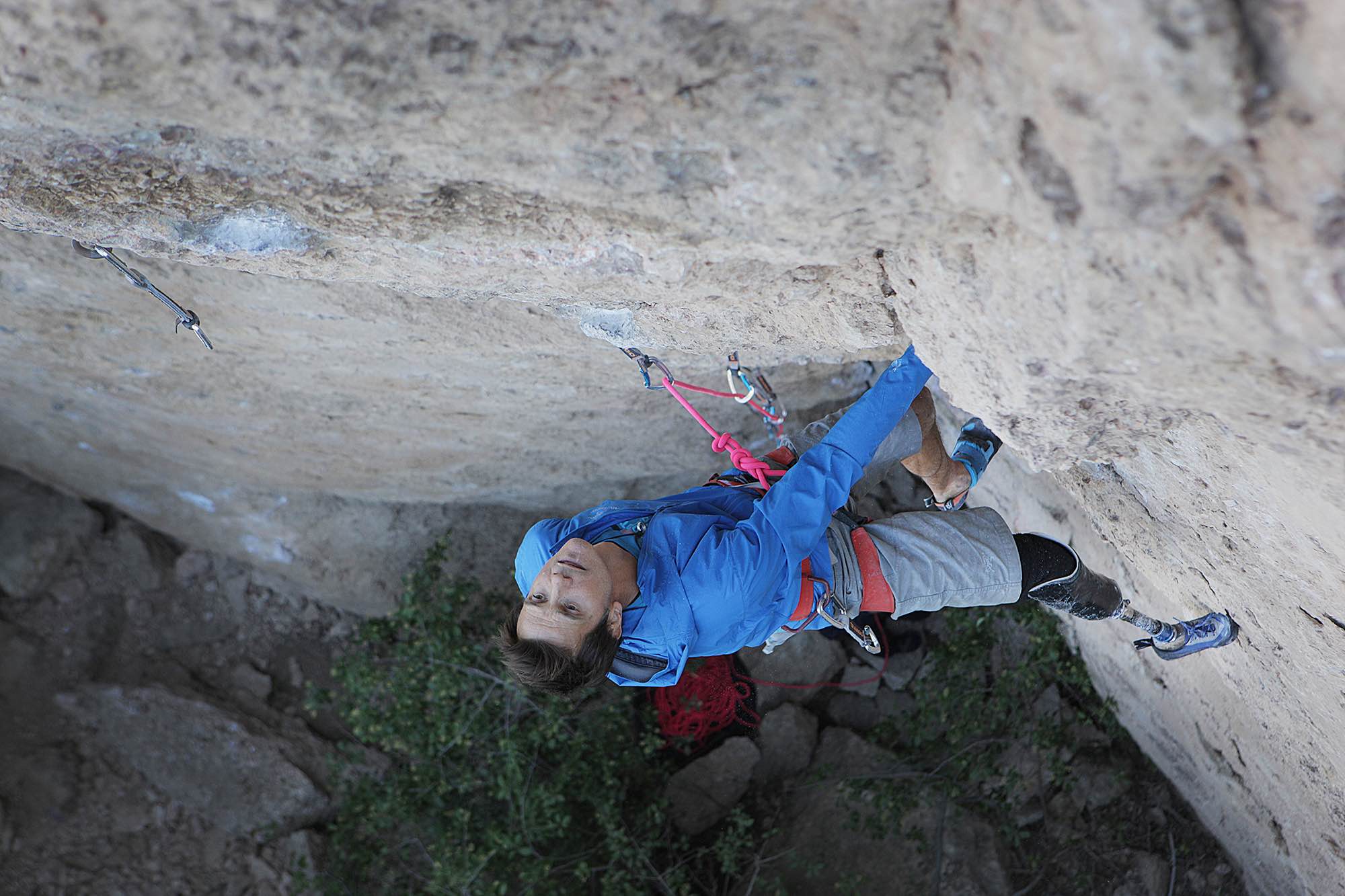When Craig DeMartino and his climbing partner miscommunicated, and DeMartino fell from from the anchors of Whiteman (5.11c) on Sundance Buttress in Rocky Mountain National Park, he didn’t just fall 10 feet. Or 30. He rushed through the air for 100 feet—around the height of a 10-story building—crashing into a tree on the way down. And perhaps thanks to that tree, which stood him back upright so he didn’t hit the ground horizontally, he survived the fall. It was 2002, and DeMartino and his wife were building their lives around climbing, roping up five days a week. “I didn’t know who I would be if I couldn’t climb,” he say. “Of course, a dad and husband—but I was making my life revolve in the climbing universe and liked it.” Following the accident, DeMartino found himself with a fused back, a fused neck, several broken bones, and the odds seemingly stacked against him ever climbing again. But, he says, “Life is 10 percent circumstances and 90 percent my reaction.” And his reactions, including the choice to amputate his right leg below the knee, have led him back into the mountains.
Since his accident, the Colorado climber has become the first amputee to climb the Nose on Yosemite’s El Capitan in under a day and led the first all-disabled climb of El Capitan. He’s a two-time adaptive climbing national champion and two-time bronze medalist at the Adaptive World Championships. He also teaches adaptive climbing clinics. His story, brought to life on film in Craig’s Reaction, is recently available on iTunes, Vimeo on Demand and Amazon Prime, after premiering last year at MountainFilm. We caught up with DeMartino to learn what it was like to make the choices he did—and what he’s up to now.
Editor’s note: This interview has been edited for length and clarity.
On adjusting to post-amputation life.
Amputation, on its surface, is a crazy thing. I had this time where I thought if I did it, I was then fully disabled and people would treat me as such. After I did it, the first time I saw myself in a full-length mirror, I cried. I was so shattered. Then, out in the public eye, people stare, which makes you feel even more shattered. Over time, I realized, people have trouble with it because they realize it could happen to them. Any of us can become disabled at any time, and when you see it right in front of you, it’s shocking on some level. Once I was at peace with it, I stopped worrying about what people thought and focused on what I thought and wanted to do. At the end of the day, I really only have to worry what my wife and kids think—they influence me, but everyone else will think whatever they want. Good or bad. So I don’t get wrapped up in it. That’s what I’d tell someone: Identify the group you’re connected to, and worry about them. The rest can just fade away.
On his first climbing attempts after his accident.
I didn’t have a grand plan for returning to climbing—I actually thought something would happen to stop me and then I could give it up. Nothing really did, except the long list of injuries I still work around. But once I sorted out my new “normal” for my body, I could climb however I wished. It was just really different from what and how I did it before. I really had to plan, because my body could only do so much for a short amount of time. It gave me focus I lacked prior.
On encouraging his family to climb, even when he couldn’t.
Climbing was and continues to be an outlet for me to release steam, angst, stress, and so even if I wasn’t in the actual act of doing it myself, [the crag] was a really comfortable place to be. It helped me decompress my brain and guide me back to something I understood. I think helping my family to climb ended up helping me to heal, and that led me back to climbing on my own.
On offering advice to first-time adaptive climbers.
The most important thing I tell first-time adaptive climbers is: Whatever we do today, good or bad, painful or not, it’s not the rest of your life. This is a small window into your injury, and the life you can have going forward. Don’t get too attached to this present iteration of yourself. It’s going to change.

On the importance of a supportive community—and why he’s motivated to help others.
The adaptive community is very much like the climbing community in that it’s really welcoming. For me, meeting and working with other trauma survivors helps give perspective. It’s nice to know other people have gone through something horrific and come out the other side—better. For me, I like to give that to other people. I wouldn’t change the accident now for anything, its given me so much. Yes, it’s taken a lot, but the good far outweighs the bad.
On the power to decide what will define you as a person.
I think [trauma and accidents] are moments—and no one wants a bad thing to define their whole human experience. And I didn’t want the accident to define the whole of my life. I want people to see that I took a horrific set of circumstances and turned it in such a way as to make it a positive. Anyone can do the same no matter what those circumstances are; you have to make a choice to do it, and I do that every day. Hopefully they see that in me.
I wouldn’t change any of the process because it made me into the person I think I was supposed to be the whole time. It’s guided me into this world that I love, and although I would love to not be in chronic pain and not have some of the physical issues with my body, this whole journey has been fantastic. Plus, I get really good parking now since I have a handicap tag!
On his home crag.
My go-to crag is the Poudre Canyon above Fort Collins, Colorado. I love all the climbing up there and it’s very seldom crowded. Just great views with great people.
On his current climbing objectives.
My goals now are fluid. I’m going to Puerto Rico to teach disabled veterans to climb outside, and I have some routes I want to project here in Colorado and in The Red River Gorge, but nothing pressing, or that I worry too much about.
